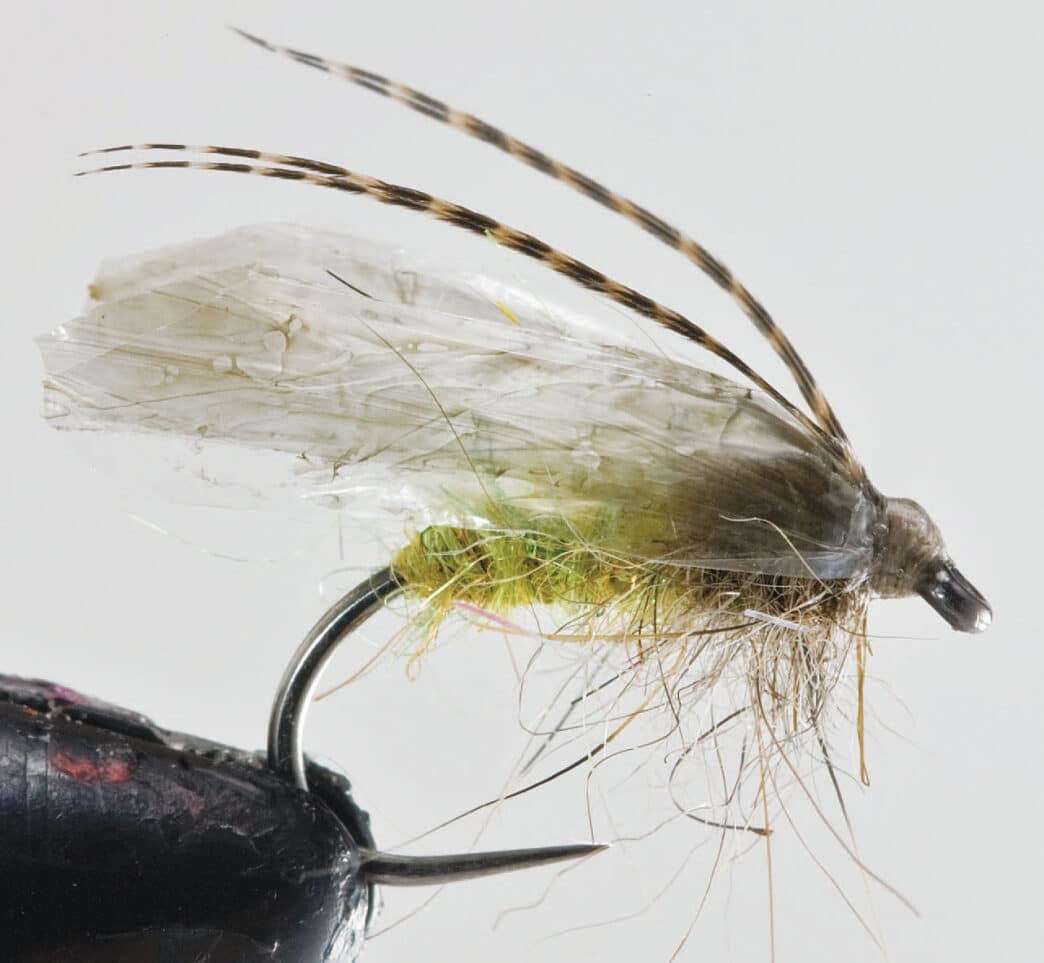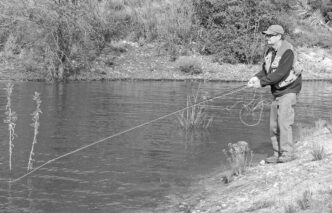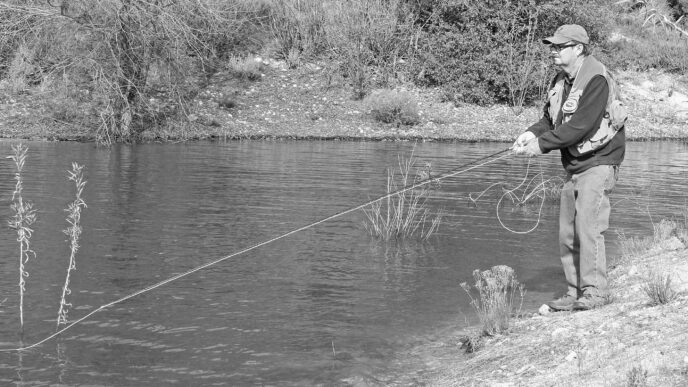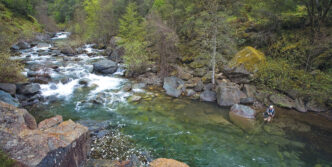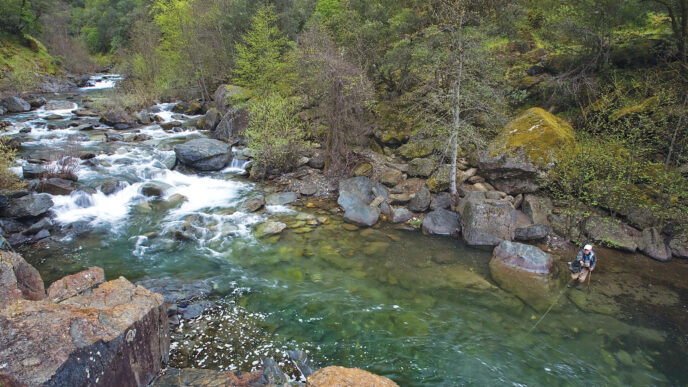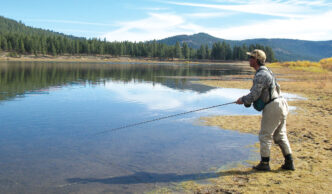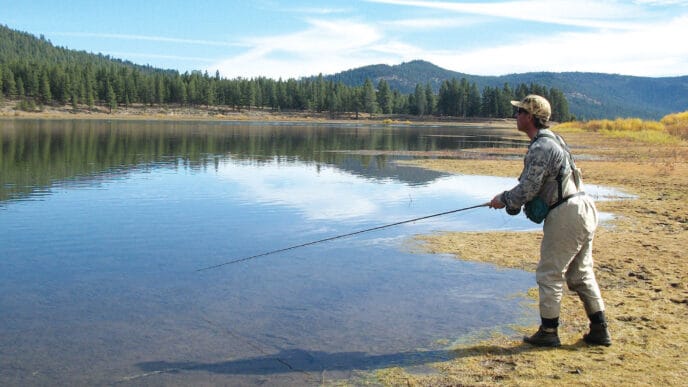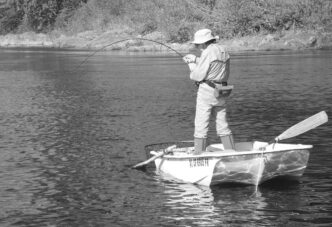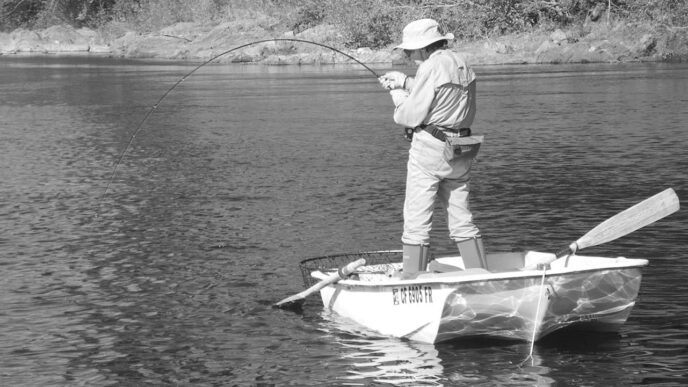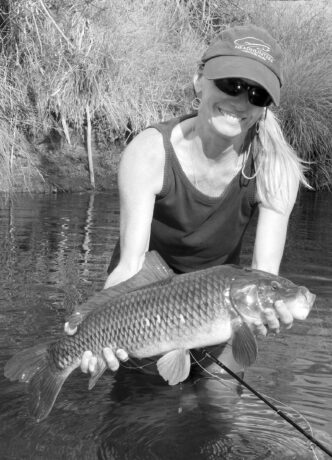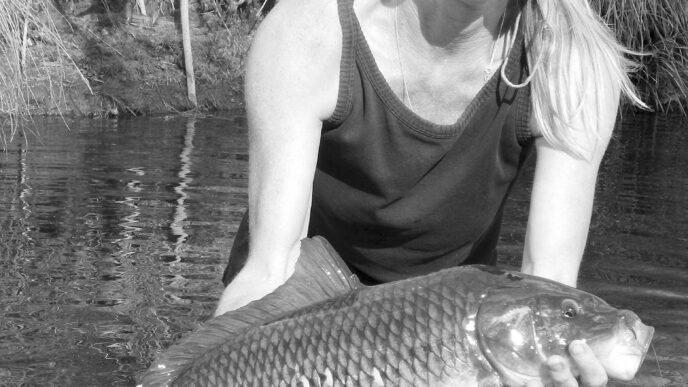Guide flies — you gotta love ’em. Guides are on the water day after day and get to observe what bugs are hatching, the details of how they behave, and how the fish prefer to take them. The flies they design have to catch plenty of fish for their clients, but they also have to be easy to tie so that they’re quick to restock. Dan LeCount’s Scuba Caddis is just such a fly — an imitation of a diving caddis that exploits one of the distinguishing marks of that often neglected aspect of some caddisflies’ behavior.
Dan LeCount is a Truckee-area guide who has worked with local fly-tying legend Andy Burk. He’s a contract fly designer for Umpqua Feather Merchants and also sometimes ties custom flies for the local shops. “Dave Stanley, Andy Burk, and Ralph Cutter have all been huge influences on my fly tying,” he says. “The Reno/Truckee community as a whole is amazing in how much information we share and how we help each other develop. I owe them all a lot.”
Like Andy, Dan got involved in the fly-fishing business early on. “I’ve been working in the fly-fishing industry since shortly after high school,” he says. “I’m 34 now, so I’ve been at it for about 15 or 16 years. My first fishing job was in a BIG 5 sporting goods store, managing their fishing department.
About a year later, I started working at Upstream Fly Fishing in Palo Alto. Then around 2000, I met Dave and Andy at the San Mateo International Sportsmens Exposition. They liked my fly tying and thought I would make a good fit with their staff, and so I began working for the Reno Fly Shop and Truckee River Outfitters. About seven years ago, I started guiding for them. I guide exclusively in the Truckee area, primarily for trout, but also occasionally for smallmouth bass. Two years ago, I helped open a small fly shop with Andy Burk and some friends in Truckee — the West River Fly Shop. It was very well received, but not very successful in a financial sense, so we shut it down. It was successful in other ways, though. Andy and I tied and developed a lot of flies that year, and I think our fly tying evolved a lot.”
It’s sometimes said that there’s nothing new in fly design, but being on the water day in and day out, guides tend to come up with innovations that they think will give them and their clients an edge, especially on waters that receive a lot of angling pressure. That’s when they start to notice little things that can make a big difference. Such was the case with Dan LeCount’s Scuba Caddis. Here’s what Dan has to say about it.
“I came up with this pattern in an effort to show educated fish something different when I was guiding with clients. Still, it definitely has its roots in flies from the past, like most do. I wanted something I could fish during the heat of the summer months in the morning and afternoon, when there were lots of spent and diving caddisflies, but fewer actual emergences than in the evenings. I watched different films of diving insects and looked at flies from the past. Gary LaFontaine’s Diving Caddis was a big influence on this pattern.
“One thing I noticed on the real diving caddisflies was that the wings had an effect that made them almost look like a flat, metallic edge. They would shine in the right light, then go flat and not reflect. They would twinkle back and forth, but not quite as brightly as true metal or tinsels. I sometimes have used raffia and Medallion Sheeting for wings on a drowned spinner pattern that I tie, although just in a single layer, so it was mostly transparent, and it would still shine at times. Because I wanted a more solid effect for the caddis wing, I used additional layers so that light wouldn’t shine through it, but off it. Capturing the reflective properties of the caddis wings was the most important feature I wanted, and when you stack layers of raffia or Medallion Sheeting, you get just that. Medallion Sheeting isn’t very durable, so it gets chewed up by fish and will split. The fish don’t seem to notice, though.
“This was a guide fly, so I wanted something I could tie quickly in the morning before a trip, half a dozen in 20 minutes or so, and be set for the day. The Scuba Caddis and variations on the Bird’s Nest fill that role for me a lot during the summer months. Because I wanted it to be quick to tie, most of the fly is just dubbing. I blend my own, and I think that doing so can improve a lot of patterns.
“The dubbing mix for the abdomen of this fly is just green Hareline Hare’s Ear Plus dubbing, green Ice Dub, and regular tan hare’s ear. Then I mix in some bright green and olive coarse Antron off the spool or hank that’s been cut into strips three-quarters of an inch to an inch long. I usually loosen up the coarse Antron by hand after it’s been cut and before mixing it in the blender, but you can mix the whole blend by hand if you wish. Adjust your colors to suit your preferences and the materials you have at hand. Just try to avoid using all of one color. Things in nature are mostly made up of lots of different colors and hues, not flat, solid colors.
“For the front of the fly, I make a generic darkish nymph blend that I use for a lot of patterns. I use hare’s mask, some squirrel, a little bit of black dubbing from Hareline called Stonefly, and a little chocolate brown Ice Dub, the same thing as dark brown Angel Hair. Again, feel free to mix and match, and adjust the colors to your local insects and available materials.
“Despite all the detail I’ve gone into here, the bottom line is simple: just make an abdomen with lots of coarse Antron mixed in, with colors to suit the caddisflies you need to match. Then make a thorax dubbing in a darker color, with lots of guard hairs. As a nice little touch at the end, I like to add some antennae made from wood duck flank. I don’t think they’re totally necessary, but they do add some extra movement and make it more appealing to the human eye. You can also use Coq de Leon for antennae as a substitute for duck flank fibers.”
Materials List
HOOK: A wide-gap, straight-shank hook, Mustad R70, R90, the Tiemco 3769, or any “competition”-style straight-shank hook, usually size 12-16, but match to the insect
THREAD: Rusty dun 8/0 UNI-Thread, or color to match the hatch
ABDOMEN: Dubbing blend of green Hare’s Ear Plus dubbing, green Ice Dub, and tan hare’s ear, mixed with bright green and olive coarse Antron
THORAX: Dubbing blend of hare’s mask, squirrel, Hareline Stonefly black dubbing, and chocolate brown Ice Dub, picked out
ANTENNAE: Two wood duck flank fibers, or substitute
WINGS: Medium dun Medallion Sheeting
Tying Instructions
Step 1. Put the hook in the vise, lay down a layer of thread, and dub the abdomen. It should be shaped like a handgun bullet, not like a carrot: make a quick taper at the end, then keep it thick and even toward the front. Cover two-thirds to three-quarters of the hook shank.
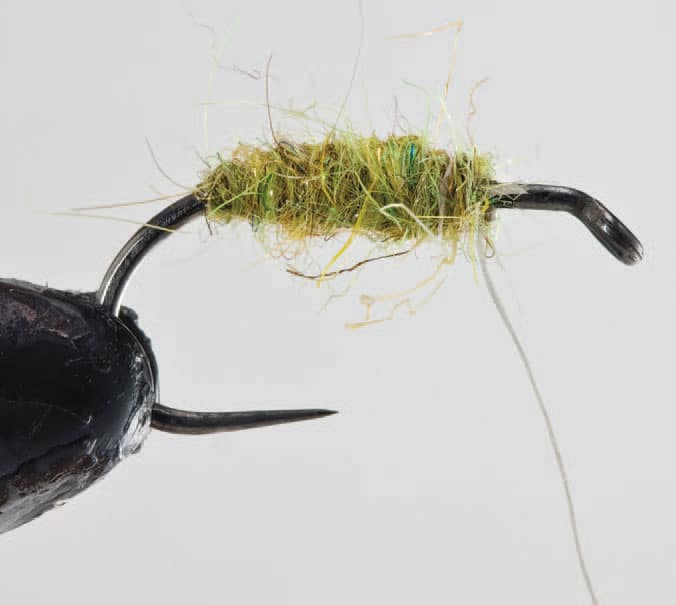
Step 2. When I choose to have antennae, I usually tie them in now — facing forward, then tie them back and down after the rest of the fly is finished. For small flies I’ll just use two fibers, but for bigger flies I’ll use four or even six fibers.
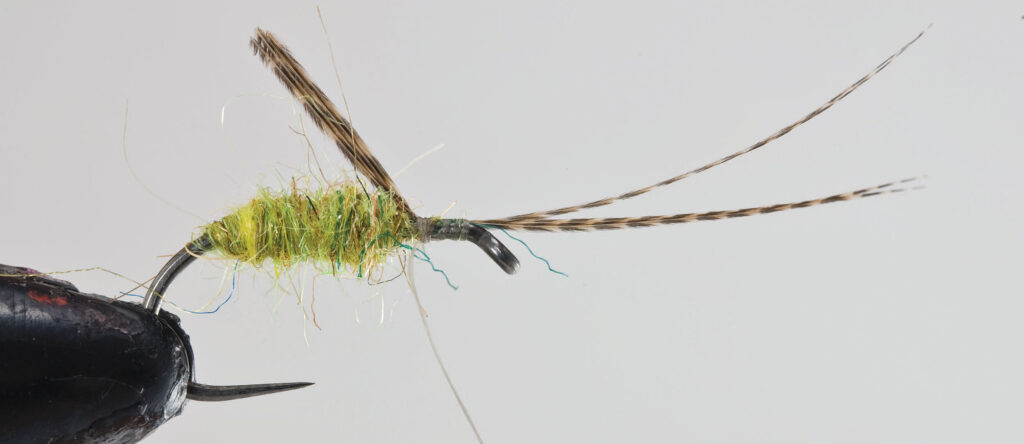
Step 3. Dub a shaggy thorax.
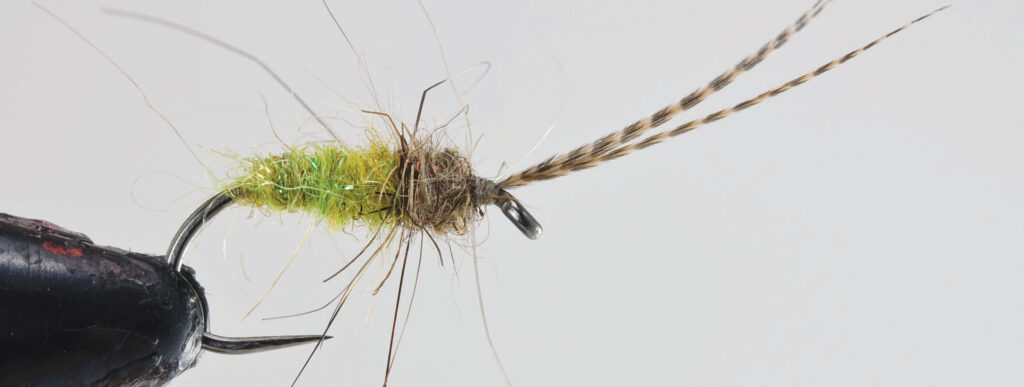
Step 4. Cut two or three strips of Medallion Sheeting in medium dun about the width of the hook gap. You can make a bunch of these before you start tying. Tie them in at the middle of the strips on the near side of the hook, then fold the right sides of the sheets over the shank so that they fold to the rear. Tie down.
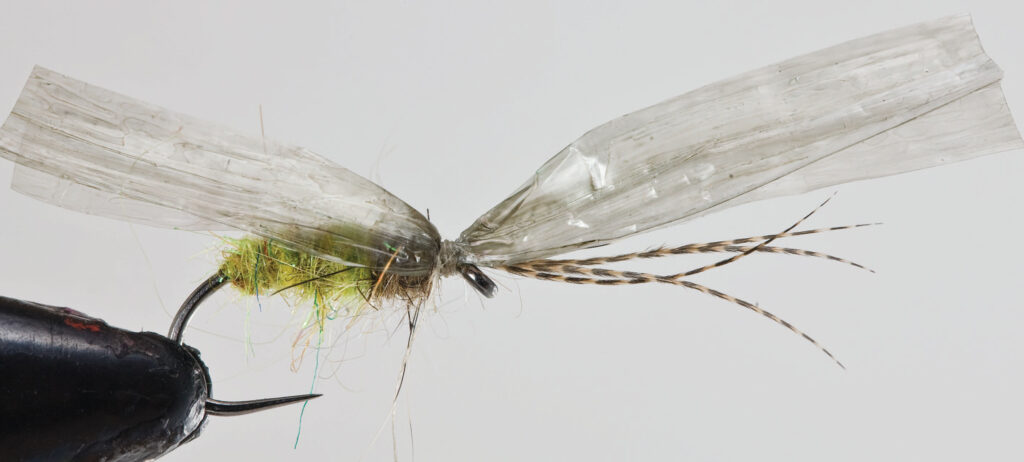
STEP 5. Pull the wing material back tight and cut the wings in a typical caddis wing shape, like a diamond, about twice the body length. Make sure your scissors are sharp.
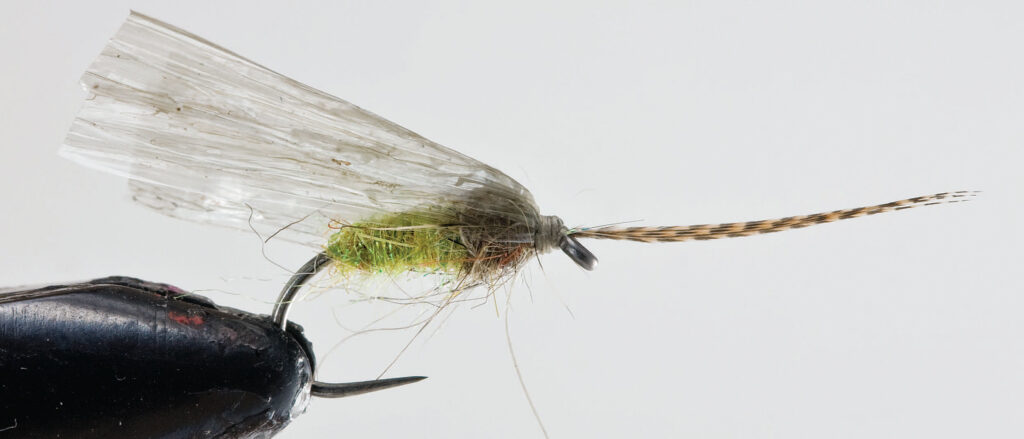
Step 6. Now pull the antennae back and tie them down. Build a thread head and whip finish.
Step 7. Pick out the thorax dubbing with your bodkin, Velcro lollypop stick, or whatever you use.
Step 8. Cement the fly head.
Dan notes: “Because this fly imitates a diving caddis, I usually dead drift it as a trailer on a two-nymph rig, but I’ve used it as a lead fly, and I’ve also had good luck with it on the swing. I’ve had good success with the Scuba Caddis when nothing has been hatching, but it also works very well during caddis emergences. I think it’s close enough to a caddis pupa that it often gets taken for them, as well.”




